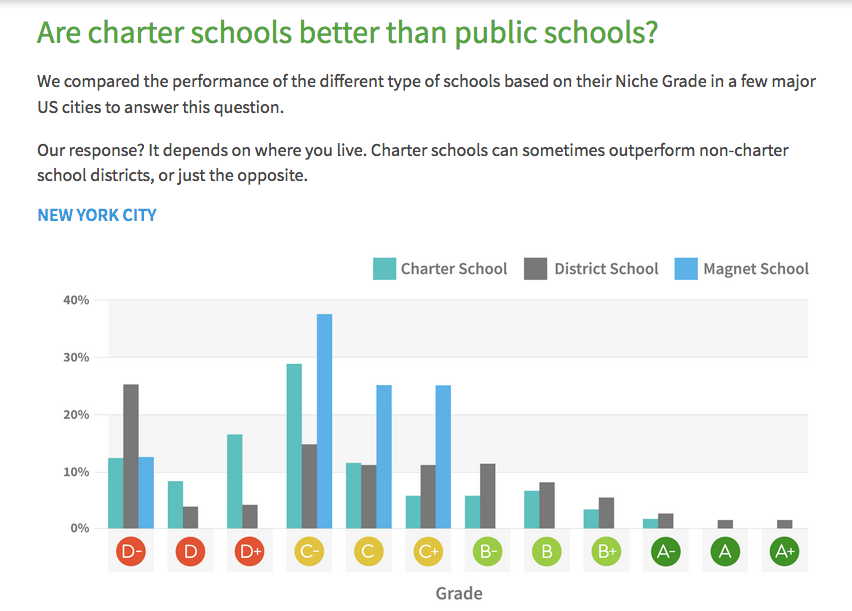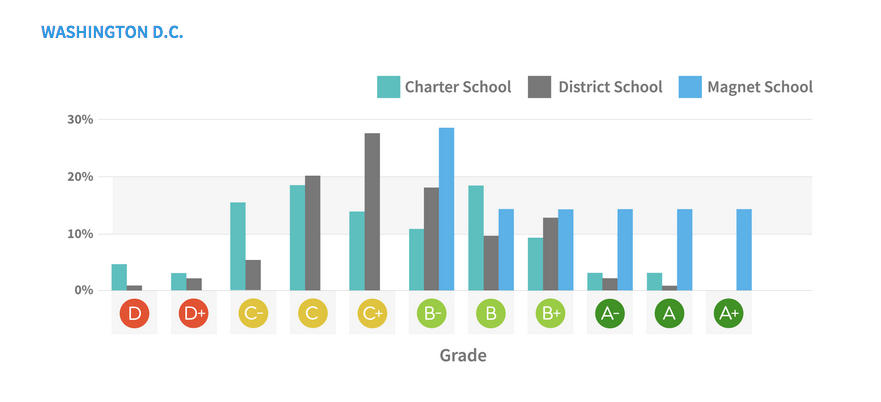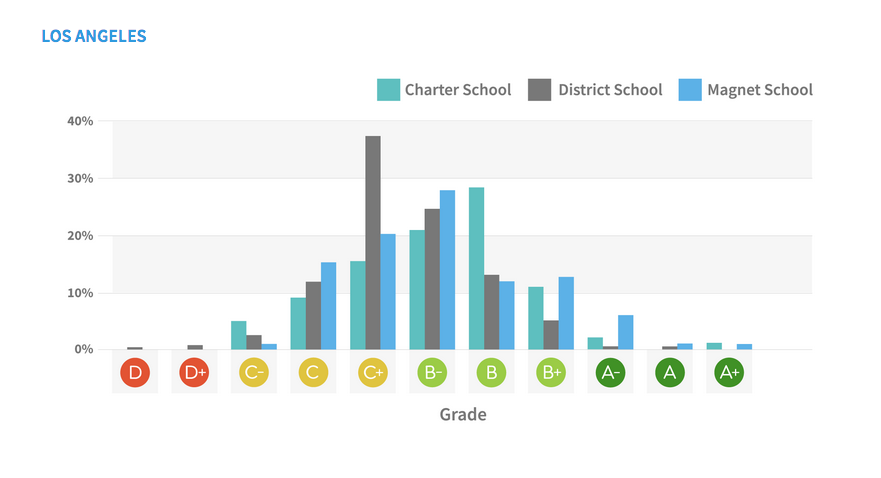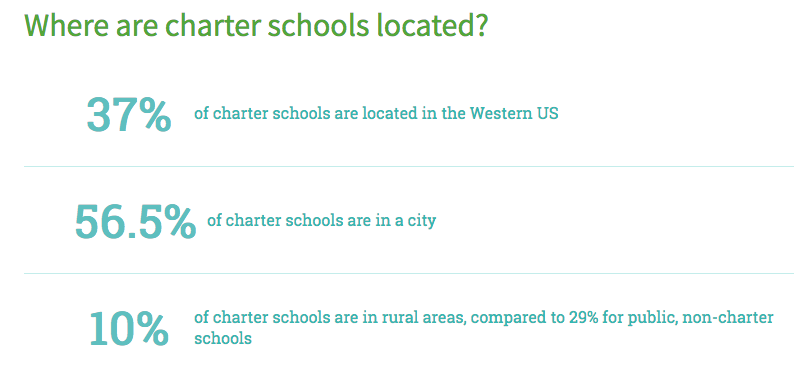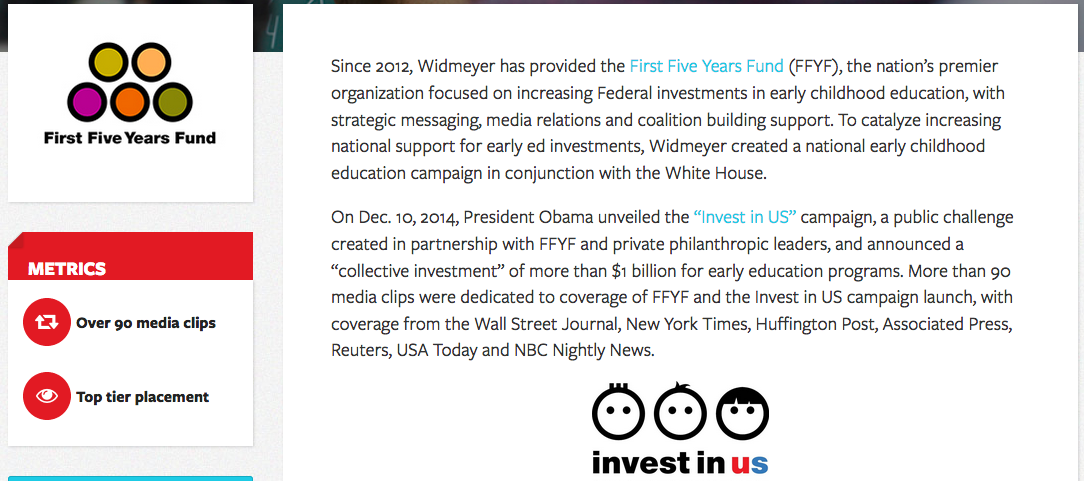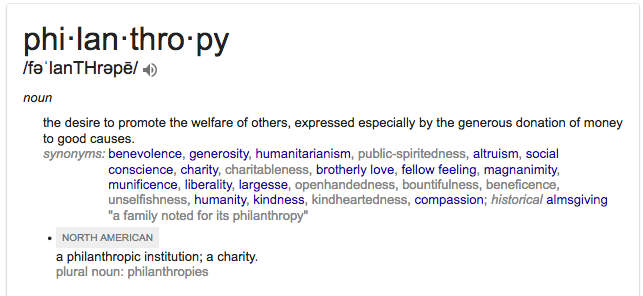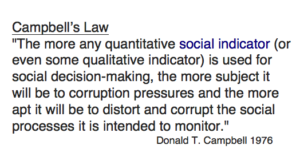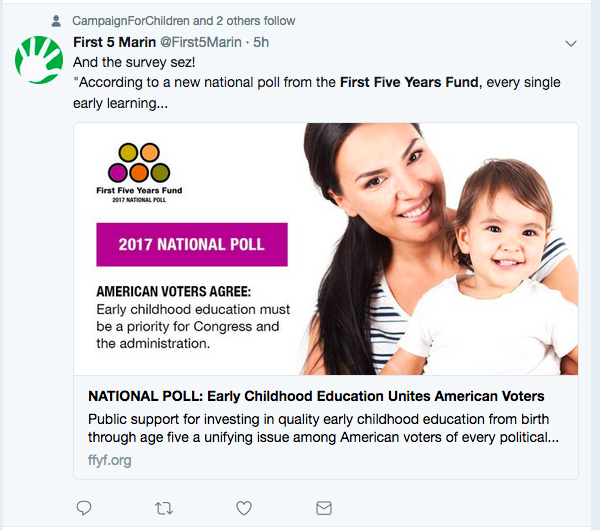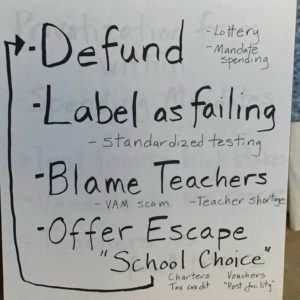In a world where very little has made sense recently, a charter school moratorium makes sense. That is, it makes sense if you base the decision on facts.
 Facts? That’s the problem. Charter schools have been in existence in this country for 26 years. But when I did a Goggle search on “chart school facts” —as I was writing this—on the first page of results there was only one organization that I didn’t recognize as a pro-charter group. So that is where I went, to Niche. (You’ll see their graphs at the bottom.)
Facts? That’s the problem. Charter schools have been in existence in this country for 26 years. But when I did a Goggle search on “chart school facts” —as I was writing this—on the first page of results there was only one organization that I didn’t recognize as a pro-charter group. So that is where I went, to Niche. (You’ll see their graphs at the bottom.)
Even without all the facts, most people have heard the accusations. Privatization. Segregation. Fraud. Corruption. Accountability? Quality?
Why wouldn’t we call for a charter school moratorium— stop their expansion — to fully evaluate their worth before continuing to fund them as a public service?
It makes total sense to stop expanding a duplication of public services especially when there has been no reliable accounting of funds, no certainty of the quality of service, and documented discriminatory practices. It’s not right to fund expanding unproven (potentially detrimental) educational practices for our school children — in the name of reform!
There are plenty of reasons to question moving forward with multiplying these schools.
The NAACP (National Association for the Advancement of Colored People) called for a moratorium on charter expansion. Here is what people told The Nation about the NAACP resolution:
- It began as “a bottom-up revolt against years of corporatization of public education.”
- The criticism that “public institutions managed by corporations with minimal regulation—[are] both unethical and socially damaging.”
- We are being “warned that further expanding the charter sector would fuel institutionalized segregation, particularly under Trump’s shadow.”
- “The question of who controls schools, and for whose benefit, is at the core of the debate.”
- “Charters perform no better and in many cases do worse compared with traditional neighborhood schools, and often at great public cost.”
- There have been “a barrage of scandals involving fraud and incompetent management.”
“At the NAACP’s hearings on charter schools…. a rare consensus on the issue: Ideology aside, privatization cannot be seen as a solution in itself, and ensuring every child gets the schooling they deserve requires comprehensive public investment.”
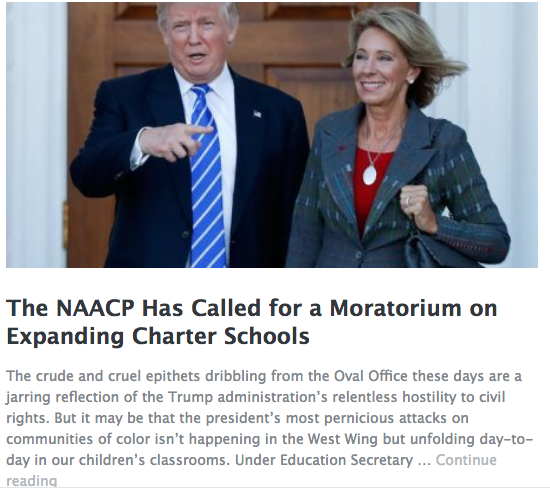 STOP RIGHT THERE! Go back. Ignore the photo and click-baited words. There is some “consensus”? Yes! That’s right.
STOP RIGHT THERE! Go back. Ignore the photo and click-baited words. There is some “consensus”? Yes! That’s right.
We know we need “comprehensive public investment” in quality public education. We need fair and equitable funding…We are working with limited resources!!!!!! Every penny counts!

As the states are still trying to figure out how to judge the quality of their schools, how is the federal government defining “high-quality” charters? Is it the Secretary’s decision?…..You are looking at ESSA.
So with the new federal education law (ESSA) being given “appropriations” by Congress (H.R. 3358) to fund more charter schools (and less to magnet schools) PLUS the fact that the Secretary is given the authority to “support” charter start-ups, now is the opportune time to call for a charter school moratorium. Please support this effort. The NAACP and their supporters on this issue have waited long enough. Let’s stop and examine the facts.
As was stated in this October 15, 2016 Press Release, the NAACP clarified the long-standing problem…
“Additionally, in 1998 the Association adopted a resolution which unequivocally opposed the establishment and granting of charter schools which are not subject to the same accountability and standardization of qualifications/certification of teachers as public schools and divert already-limited funds from public schools.”
(Read the full resolution and official press release for more information.)
How long are we going to allow corporate rulers to trump reasonable requests by reasonable people? Please, make the charter school moratorium a reality. Call your representative and voice your support. It’s that easy.
What harm is there in actually taking the time to fully vet and address the problems that have been brought to light in the charter school system?
The education system is not going to fall apart tomorrow if we put a hold on any new federal charter school spending in this upcoming budget (currently called H.R. 3358 but that could be changed).
This country should not only support a moratorium on federal charter school expansion, but must clearly demand a HALT TO ALL NEW SPENDING on the Federal Charter School Program AND the NEW CHARTER SCHOOL SPENDING grants in the Every Student Succeeds Act (ESSA).
We need to be clear; no more games.
ESSA is slated to fund not only start-ups but also new charters’ first year transportation costs, online charters with their related overhead technology costs, new pre-school (early childhood) charters, consulting and planning of new schools and the newest scheme — Pay for Success grants that are further fueling the unrestricted flow of public funds into private pockets.
Privatizing public education is not a solution. There is a better way.
Before more money is forever lost in failed attempts to start new schools, demand your federal representatives call for a charter expansion moratorium immediately. It will not affect already existing charters and the children in them. This is a reasonable request. This is a “do no harm” demand.
What each state does is their right but as a nation we need transparency, an accounting of funds and programs, and clarification on the role of the federal government in pre-K –12 education. We can’t afford to keep doing what we are doing. A moratorium makes sense.
No children will be harmed by this action. And given that expanding charter schools will “divert already-limited funds from public schools,” inaction will harm the public system.
“Historically the NAACP has been in strong support of public education and has denounced movements toward privatization that divert public funds to support non-public school choices.”
Help the NAACP to help all our public school children. Contact your representatives NOW!
#####
P.S. In pursuit of truth….remember that facts vary depending on where you live….but, at a glance, there is reason enough to question Congress: why did they cut funding for magnet schools, upped funding for charters (repeatedly over the years), and why is the federal government making these decisions to begin with?

